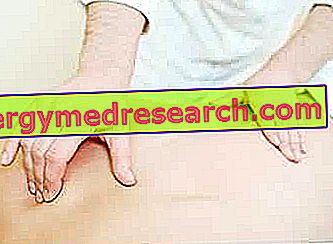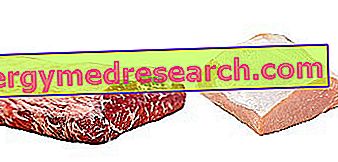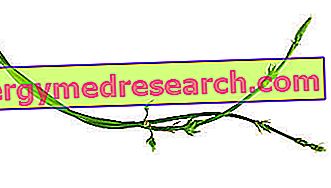Generality
Massage therapy is the therapeutic massage of the muscles and connective tissues, practiced with the hands and mainly aimed at preventing diseases of the musculoskeletal system or rehabilitating the subjects who are affected.

Massotherapy does not require any special preparation and should be considered a practice with a low risk of complications; however, it has some contraindications, which are: pregnancy, coagulation disorders, fractures, skin lesions, skin infections and tumors.
Massotherapy is a therapeutic practice whose effectiveness has been the subject of scientific investigations for several years. The latest research on this subject has shown that its beneficial power is limited in time and is greater for certain conditions (eg: chronic back pain).
What is massage therapy?
Massage therapy is the therapeutic massage of muscles and connective tissues, generally performed with the hands ( manual massage ).
Massage therapy includes various massage techniques, with the aim of promoting the health and well-being of different systems of the human body, including mainly the musculoskeletal system .
Very often, massotherapy experts define the latter as a rehabilitative and preventive practice against many diseases that have as their object the muscles, blood vessels, lymphatic vessels and motor nerve endings.
WHO PRACTICES THE MASSAGE THERAPY?
Who practices massotherapy is called massotherapist . The massage therapist is a professional figure with a specific qualification in massage therapy.
The massage therapist has knowledge in the field of human anatomy, physiology, human biology, chemistry, endocrinology, immunology, pharmacology, pathology and histology.
ORIGIN OF THE NAME
The term "massotherapy" derives from the union of two Greek words, which are: " masso " ( μάσσω ) and " therapeia " ( εραπεία ). The word " boulder " means "kneading" or "shaping with your hands", while the word therapeia means "cure" or "healing". Thus, the literal meaning of massage therapy is "care with hand shaping".
HISTORY
According to some historical testimonies, the first forms of massage therapy would have been born 2, 000-3, 000 years before the birth of Christ, in Ancient Egypt and in those geographical areas where China and India currently reside.
In the Western world, the spread of massotherapy and manual massage as a form of therapy complete with rules, indications, contraindications and deontological norms is due to a Swedish doctor, gymnast and physiotherapist, named Pehr Henrik Ling, who lived between 1776 and 1839.
Ling is known to be the father of the so-called " Swedish massage ", a manual massage technique on which the basic principles of modern massage therapy are based.
operation
According to massotherapy experts, manual massage would benefit the muscles, connective tissues and the human body in general, because:
- It determines an improvement in blood circulation even in the smallest vessels (capillaries). This leads to a better supply of oxygen and nutrients to the cells of the tissues involved; a better supply of oxygen and nutrients to the cells ensures that they work better and heal faster than any non-fatal damage or injury;
- Promotes lymphatic drainage . This improves the elimination of waste substances from the tissues;
- Stimulates the secretion of endorphins . Endorphins are chemicals produced by the brain and have a powerful analgesic and exciting activity.
- It blocks the nervous signals that make the human being feel pain and muscle-tendon tensions.
Indications
Who practices massotherapy believes that the latter is useful in case of:
- Contracted muscles;
- Sore muscles;
- Contractures or hardening of the tendons;
- Psychophysical stress (eg: anxiety, anxiety disorders, minor depression, etc.);
- Water retention;
- Cellulite.
Massotherapy, therefore, is indicated against muscle pain, for the relaxation of muscles and tendons, for an improvement of lymphatic drainage and for a mental relaxation (nervous relaxation).
MASSOTHERAPY AND SPORT
The massage therapists strongly recommend the massage to those who practice sport and to professional athletes, to reduce post-workout fatigue, to accelerate recovery and to promote relaxation of the muscles after their use.
Preparation
Massage therapy does not require any special preparation. Therefore, the patient should not abide by any particular preparatory rules before undergoing a massage therapy session.
How do you do it?
Massotherapy is a treatment that is generally divided into a cycle of at least 5-10 sessions .
The first session is different from all the others, because it foresees a preliminary phase in which the massage therapist investigates the patient's state of health and performs a sort of medical history .
This preliminary phase is of fundamental importance, as it allows the therapist to establish on which points of the human body it is good to act, to be of benefit to the patient.
Once the problems to be treated are known, there are all the prerequisites for the manual massage to begin: for the occasion, the patient must remove the main clothing and lie down on a special bed, present in all the massage therapist's offices.
For manual massage, those who practice massotherapy often use oils or ointments, as the latter guarantee greater smoothness and a better shaping action on the hands of the patient.
MASSAGE THERAPY TECHNIQUES
Among the massage techniques, which are part of massotherapy, include:
- The touch . It is the technique with which every massage therapist starts and ends each session. It consists of a sliding of the hand on the skin, without the exercise of any pressure.
At the beginning of the session, it serves to prepare the human body for subsequent massage techniques.
- The rubbing . It provides greater pressure on the skin, compared to what happens with skimming. It is an essential technique, because it precedes and follows every other massage technique.
- The clutch . It is a rubbing in which the therapist's hands remain in constant contact with the patient's skin. The clutch allows to act both on the superficial and on the deep layers of the human body.
- Kneading . It is a technique applicable only where there is muscle mass. It consists of gripping, lifting and moving the muscles transversely, pressing the thumb against the other fingers of the opposite hand.
There are two forms of kneading: superficial kneading and deep kneading.
- The pressure . It consists of a compression perpendicular to the patient's skin. It aims to facilitate the reabsorption of edema and improve blood circulation, where there are impediments.
- The percussion . It consists of a series of rapid and brief tapping and of variable intensity, performed by means of the fingers, the edge of the hands or of the hands placed in a cup.
The choice of tapping mode depends on the problems displayed by the patient.
In general, the purposes of percussion are: to improve contractility and muscle metabolism, promote vascularization of the muscles and stimulate the nervous system.
- The vibration . In performing it, the therapist places his hand on the skin area to be treated and performs small and rapid lateral movements, similar to flickering.
Risks and complications
If practiced by a qualified therapist, massage therapy is a substantially safe and low-risk technique. In fact, only in rare circumstances, it gives rise to side effects.
The possible side effects of massage therapy include:
- Temporary pain;
- Swelling;
- Hematoma formation;
- Adverse / allergic reactions to the oil or ointment used during the session
Contraindications
Massotherapy is contraindicated in case of:
- Pregnant women . It is not clear whether the manual massage is dangerous for the fetus or not. However, as a precaution, it is best to avoid any kind of body manipulation.
- People with bleeding defects (eg hemophilia), fractures, skin wounds, skin infections or osteoporosis . In such situations, the manual massage could worsen the current pathological conditions. For example, in the case of hemophilia, it could induce bleeding or determine the formation of hematomas.
- Those who have undergone surgery in recent times . This is a temporary contraindication.
- People with tumors . The contraindication is limited to the anatomical area where the tumor resides. In all the rest of the body, therefore, manual massage is practicable.
Results and criticisms
The real therapeutic power of massotherapy has been the subject of studies and debates in the medical-scientific community for several decades now.
Investigations into this have shown that manual massage is beneficial to the human body, but not as much as it is in the statements of massage therapists.
In fact, according to the most reliable scientific research, massotherapy has a soothing effect on pain, limited in time (therefore short term) and a moderate beneficial action against mood disorders (eg anxiety, minor depression etc. ). Furthermore, it was found that, to appreciate the results, patients should use manual massage on an ongoing basis.
In light of these evidences, doctors strongly advise against preferring massotherapy to all those medical treatments which are certainly effective, especially when the present morbid condition is of a certain clinical relevance.
All this, however, does not exclude the association of massotherapy with traditional forms of therapy.
Table. Results of scientific studies aimed at demonstrating the effectiveness of massage therapy.
- Several researches conducted between 2008 and 2011 have shown that massotherapy produces its best analgesic effects against chronic back pain.
- A 2012 study showed a short-lasting soothing action of massage therapy against knee pain caused by osteoarthritis.
- Numerous studies have shown that, in people with tumors, massotherapy tends to promote mental relaxation and improve mood.
- Many studies have shown that the benefits of massage therapy are short-lived and depend on the continuity of manual massage.



